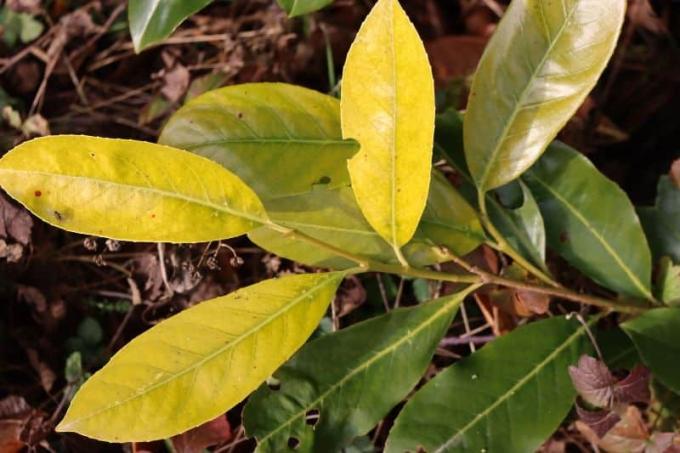

Table of contents
- Choose the right variety
- Find the best location
- Provide the perfect base
- Plant at the best possible time
- Use climbing aids directly when planting
- Always supply hops with water and nutrients
- Promote height growth with pruning
- Protecting hops from pests and diseases
- Recognizing and harvesting ripe hop cones
- Dry hop cones
- Making tea from hop cones
In the wild, hops are mostly found in damp forests or near river banks and streams. However, the popular perennial can also be cultivated in the home garden and even on the balcony without any problems. A green thumb is not absolutely necessary for this, because the plant is considered relatively easy to care for. However, if you want to get the best out of your hop harvest, you should consider these 11 tips!
Choose the right variety
The large selection of different hop varieties makes it possible to always choose the right variety. On the one hand, of course, the taste and the processing purpose of the hops play an important role. Because hops can taste both fruity-sweet and herbal-earthy. But the available space should also be taken into account when choosing the variety. Because hops are extremely strong and grow accordingly. So-called “dwarf varieties”, such as the “Gimmli” variety, are recommended for cultivation on the balcony.
Find the best location
Hops can be cultivated both in beds and in pots on the balcony. Irrespective of this, however, it must always be taken into account that the perennial is very keen on growing – in all directions. Because both the shoots and the roots need a lot of space, so they like to overgrow other plants. However, in order for the hops to be able to grow and thrive extensively, the location must meet the following requirements:
- preferably sunny location
- a lot of sun is important for fruit formation
- Half shade is also tolerated
- neither too dry nor too wet
Tip:
Thanks to its rampant growth, hops are ideal for providing shade or privacy on the terrace. However, only until winter, because then it retreats into the ground to hibernate.
Provide the perfect base

Although hops are considered to be easy to care for, they have special demands on the soil. If the perennial is cultivated in a bucket, high-quality potting soil is recommended. This is a bit more expensive in comparison, but the purchase price is worth it. Because the substrate fulfills the optimal conditions for hop cultivation. In general, the perennial feels most comfortable when the soil has the following characteristics:
- nutritious and fluffy
- profound
- nitrogen rich
- pH: 6.5-7.5
- sandy loam or loamy sand
Plant at the best possible time
There is no specific date for planting hops. Because the perennial can be planted both in spring and in autumn. When the hops are best planted usually depends on their age:
- older specimens: from the end of March
- unwoody young plants: from May
- Autumn: late September to November
Use climbing aids directly when planting
Hops are extremely vigorous, which is why the shoots often reach a length of several meters. It is therefore advisable to support the shoots and to provide the perennial with a climbing aid. Ideally, the climbing aid is already used when planting, as this could damage the roots later. In addition, the following must be observed:
- Climbing aid made of wire or ropes
- but also wood or iron possible
- trellis or scaffolding
- thread strong shoots around climbing aids from May
- always clockwise
- Repeat regularly until harvest
A notice:
Hops are so-called "right-hand winders", which means that their shoots wind clockwise. In order not to confuse the perennial, the direction should therefore always be maintained.
Always supply hops with water and nutrients
The rapid growth of hops means that the perennial is extremely hungry. On the one hand, it wants to be watered as regularly as possible so that the soil is always moist. However, waterlogging must be avoided at all costs. On the other hand, the plant needs sufficient nutrients to grow. Therefore, the hops are not only watered regularly, but also fertilized:
- incorporate compost or animal manure in the spring
- Fertilize once a week from early summer
- until flowering begins
- the longer the shoots, the more often fertilize and water
Promote height growth with pruning

If the perennial is not pruned, it will literally grow in all directions. However, this can be prevented with a targeted cut and at the same time promote height growth. The best way to cut the hops is as follows:
- Tie up 3-4 strong shoots during growth
- let them grow and climb
- Cut off remaining tendrils close to the ground
Tip:
It is better not to cut the tendrils close to the ground before winter, but only to shorten them to a length of 50-80 cm. Because this allows the remaining nutrients of the shoots to migrate into the rhizomes.
Protecting hops from pests and diseases
Hops are relatively susceptible to powdery mildew, also known as the "fair weather fungus". Powdery mildew can be recognized by a white, mealy coating on the leaves. There is no chemical treatment for this, but a mixture of milk and water has proven to be effective against it. This home remedy is also useful in the fight against aphids. Alternatively, the pests can also be combated with the following home remedies:
- use natural enemies, such as ladybugs
- Mixture of 5L water and 90 ml rapeseed oil
- Mix some washing-up liquid into the irrigation water
Recognizing and harvesting ripe hop cones
The harvest time for hops is from the end of August to mid-September. However, it is not possible to tell at first glance whether the hop cones are ripe. Because in order to determine the degree of maturity of the cones, they have to be opened. In mature specimens there is a kind of yellowish powder inside, the so-called "lupullin". When the first hop cones are ripe, the harvest can begin. The hop cones are usually picked by hand, paying attention to the following:
- harvest on a dry day
- harvest green cones
- it is best if they are still tightly closed
- Carefully cut off the umbels
- do not injure them
Tip:
Ideally, it did not rain the days before the harvest date either, so that the hop cones are as dry as possible. The drier the fruit is, the quicker it can be processed.
Dry hop cones
The hop cones have the longest shelf life when dried. It is therefore advisable to dry them after harvesting. There are two different methods for this: On the one hand, the hop cones can be dried in the oven. The cones will lie on a grid and stay in the oven at 80 degrees for about an hour or two. An alternative to this is air drying, in which both individual hop cones and entire twigs can be dried.
- set up individual cones on a sieve
- Remove twigs from fallen leaves
- hang upside down
- in a dark, warm and dry place
A notice:
The darkness is important to preserve the green color of the hop cones. If these are dried in the sunlight, they turn red-brown.
Making tea from hop cones

Most people probably know hops in connection with beer. However, the hop cones are also used in the medical field. Because the ingredient lupulin has a calming effect and is therefore often found in medical products. But a tea made from hop cones can also provide relaxation and even alleviate insomnia. The tea can also be made quickly and easily:
- about 1-2 teaspoons of hop cones
- Pour about 150 milliliters of hot water over them
- Cover container
- leave for about 10-15 minutes
- Drain the tea and sweeten if necessary
A notice:
It is best to always drink the tea fresh!
 garden editorial
garden editorial I write about everything that interests me in my garden.
Learn more about shrubs

Cherry laurel has yellow / brown leaves: what to do?
Cherry laurel is one of the hardy garden plants in the garden. Nevertheless, it can happen that the leaves of the cherry laurel turn yellow or brown. The causes are manifold. Since some can kill the cherry laurel, you should investigate.

12 native evergreen shrubs & woody plants
Dreary, bare trees and bushes in winter? It doesn't have to be. Even in the European climatic conditions, native, evergreen trees thrive splendidly. The variety of species even enables the gardener to adapt his privacy hedge exactly to his garden design. This guide presents the most beautiful native and evergreen shrubs and woody plants.

Curb Vinegar | Does bucket or root barrier help?
Vinegar trees like to spread in the garden and sometimes even drive other plants away. However, this can be avoided by curbing the growth of the trees. You can find out which methods are best suited for this here!

Rhododendron has dried up: how to save it | Rododendron
Even if the rhododendron is withered and no longer sprout, it does not have to be dead. The plant can look completely dried up above ground, but there is often still life in the roots. It is therefore worth taking appropriate measures to save the flowering shrub.

Winter jasmine, Jasminum nudiflorum | Care, propagation & pruning
The winter jasmine is a relatively frugal and robust plant that can cope with many different site conditions. The plant enchants with bright yellow flowers in winter and tolerates deep sub-zero temperatures very well. It should be pruned regularly and is easy to propagate.

Ball Tree: Care from A – Z | These 9 varieties are suitable for ball trees
Ball trees adorn many a garden, front yard and entrance area. They require little space. Their trunk thickens with age, but its height remains the same. The spherical crown is easy to trim. Nevertheless, they offer everything that makes a tree.



